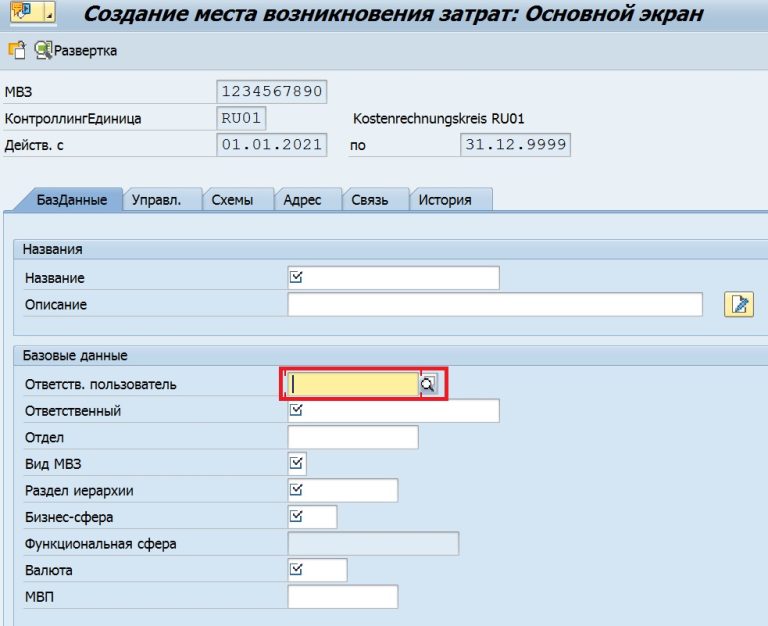How much does a microwave laboratory cost?
Greetings! I am a microwave engineer and I design various devices. In addition, my responsibilities included and include the selection of measuring equipment, so this topic is close and interesting to me. Now, I have a mini-laboratory at home.
Disclaimer: I only cite examples of companies known to me, with whose equipment I have worked.
VAC
The most important thing for a microwave designer is a vector network analyzer. This device measures S-parameters, that is, it shows the degree of match, the gain (loss) in the measured device, as well as the phase change. Any device is characterized by SWR and coeff. transmission – which is the same as loss (for passive devices) or gain (for active devices).
VNA prices vary greatly from model to model. I will try to generalize at least a little. The main factor in the price is the maximum operating frequency. Less significant factors are power, the presence of a mode of operation in the time domain, the ability to measure the coefficient. noise.
Top manufacturers of microwave (and not only) measuring equipment are the American company Keysight and the German company Rohde & Schwarz. Prices are about the same; VACs cost from 2 million to 70 and more. An average device with a frequency range that covers most of the current applications – up to 24 GHz will cost about 5 million rubles.
A cheaper, but not inferior in quality option is the VAC of the Planar company. This is a domestic equipment manufacturer that we can be proud of. Planar produces several series of devices, the most famous – Obzor and the more expensive Cobalt. A review up to 3 GHz costs about 1 million rubles. However, you need to add the price of a laptop to the cost (you can use the simplest one).
Also, one cannot fail to mention the Micran company and their VAC. The prices are slightly higher than those of the Planar. My colleagues noted the default time-domain measurement option (no extra cost) as a merit. I will allow myself to speak negatively – the software is, to put it mildly, unsuccessful and inconvenient.
Multimeter
A multimeter is a must-have for any technical laboratory. Even if you are not designing active devices and there is no need to check the voltage at the power pads, a multimeter is required to check the connection (“ringing” option).
In general, for microwave applications, it doesn’t matter how fast you buy a multimeter. Suitable no-name for 500 rubles. High-quality multimeters that are pleasant to hold in your hands, such as Fluke or Keysight, cost from 8 tr.
Oscilloscope
In the power supply circuits of microwave amplifiers, unpleasant phenomena often occur: voltage surges and chips, as well as transients, therefore, the voltage on the amplifier should be monitored using an oscilloscope. In addition, the oscilloscope paired with the detector will show the envelope of the radio pulse.
For microwave applications, there is no need for digital inputs at all, and frequencies of 100-150 MHz are usually sufficient.
Oscilloscopes for 2 channels at the specified frequency from Tektronix, Keysight and R&S cost from 90-150 tr. More affordable types of Rigol or Hantek – from 30 tr. However, in the matter of choosing an oscilloscope, I think it is worth focusing on professional units.
Note that microwave oscilloscopes with a maximum frequency of several GHz are not necessary in a microwave laboratory. Although, of course, they allow for unique measurements, for example, comparing the phases of two signals in real time. Also, such oscilloscopes show the instantaneous spectrum of the signal. They also have the option to switch the input impedance to 50 ohms.
Tip: If you buy an oscilloscope with a built-in standard waveform generator, you don’t have to buy the generator separately.
Laboratory power supply
I think everyone knows what a power source is. I only draw your attention to the fact that affordable Chinese sources have emissions when switched on, which can negatively affect the sensitive elements of the circuit. I recommend Keysight or R&S power supplies, they cost from 100 thousand rubles, another advice is that it is much more convenient to buy a two-channel, or even better a three-channel with a third +5 V.
Microwave generator + wattmeter and spectrum analyzer
Unlike a VNA, a generator and wattmeter with a spectrum analyzer is not a necessity for any microwave laboratory. This kit is essential if you are designing microwave amplifiers or mixers. It may also be needed if you are developing a passive device, but at high power – then you need to test at the specified power (although something else is required here, more on that below).
Microwave generators, like VNAs, cost from 2 to 20 million rubles. An average Keysight or R&S generator can be bought for 3 million rubles. A portable USB generator can be an excellent alternative to a benchtop instrument if you do not need to carry out complex measurements that require a multi-tone mode. For example, Mikran has one, and it has a very affordable price of about 100 thousand rubles up to 6 GHz and 250 up to 12.
I advise wattmeters to choose the USB type, they are cheaper (we are talking about the minimum laboratory set). I recently wrote about my purchase – a Micran wattmeter up to 6 GHz, it costs about 70 thousand rubles. Keysight or R&S wattmeters are about an order of magnitude more expensive and cost from 700 thousand rubles.
A spectrum analyzer is required to assess the level of multiple harmonics at the output of an amplifier or mixer. The main parameters when choosing a spectrum analyzer are resolution bandwidth and video bandwidth. To put it simply, the resolution bandwidth indicates how often points will be drawn on the power-frequency graph, the video bandwidth indicates the window size, that is, the amount of power spectral density that will then be integrated and the result will be equal to the power at a given frequency. More advanced spectrum analyzers have the option to display the spectrum in real time, it is necessary for specific applications, for example, when the signal, its shape and time of arrival are unknown.
The price level for professional spectrum analyzers is about the same as for VNAs. I saw the budgetary spectrum analyzer Akip / Siglent for 300 thousand rubles up to 3 GHz, however, I never worked with it.
Accessories
The most necessary thing is microwave cables (cable assemblies). To ensure high-quality measurements to the VNA, it is necessary to buy phase-stable cable assemblies. These assemblies are usually reinforced with a metal hose or an extra layer of plastic and cloth.
The price of phase-stable cable assemblies is highly dependent on the maximum operating frequency. Imported cable assemblies are very expensive – up to several hundred thousand per cable. Manufacturers whose assemblies I held in my hands EMC technology, Maury microwave, Huber + Suhner, Gore, Rosenberger. Fortunately, our country also makes high-quality phase-stable cable assemblies. For example, the already mentioned Mikran (about 15 thousand rubles) I had such for a long time at my last job, they were rudely made, and it is unpleasant to turn the nuts, as well as Amitron Electronics (from 8 thousand rubles) – I now have such.
A set of calibration standards is also required (with connectors of the same type as phase-stable cable assemblies). Calibration kits are often sold complete with VNAs, but it is much cheaper to buy a calibration kit separately, for example, from Micran. For example, a set of measures up to 26 GHz with characterization costs 45 thousand rubles. Many engineers love auto-calibrators, they are much more expensive (in this article I am writing about the necessary, but qualitative minimum).
In addition to expensive measuring phase-stable assemblies, short cables are required to connect the measuring units. Such assemblies are much cheaper and cost from 1.5 thousand rubles. I advise you to buy on a semi-rigid cable – they have a much higher maximum operating frequency. Firms I can recommend: Wurth, Amitron Electronics, MiniCircuits.
Also, adapters are often needed, that is, coaxial transitions. From plug to socket, or inter-channel. Transitions cost from 2 thousand rubles. Firms: Huber + Suhner, Amitron, Micran.
I advise you to definitely purchase calibrated keys for SMA or N type connectors. This purchase, firstly, guarantees a high-quality connection of connectors, and also protects expensive cable assemblies from stripped threads. Cheap and high-quality keys can be bought in Mikran – about 10 thousand rubles. Keysight or R&S also sell keys (as well as cables and adapters), but the price is an order of magnitude higher.
I consider it necessary to have removable edge connectors like SouthWest (end launch high perfomance connectors) in the developer’s laboratory. There are different companies that produce similar connectors, for example Gigalane. The cost of one connector is about 13 thousand rubles.
Additionally
Additional microwave devices are often needed, such as valves (to protect devices from backward waves if the amplifier under test burns out), attenuators, DC blocks, Bias T, microwave loads, dividers, and laboratory amplifiers. Some of the above is convenient to buy for a wide frequency range: attenuators, DC blocks, Bias T, loads (I have a lot of accessories from MiniCircuits – high quality and inexpensive). But broadband amplifiers, valves and dividers are very expensive, they are usually bought for each project with a new frequency range.
In addition, tools are required – a screwdriver (necessarily small, with bits PH0, 00 and 000), tweezers, antistatic gloves.
Also, if we are talking about microelectronics, it is quite difficult to do without a microscope. I advise you to buy a professional stereo microscope. For example, domestic LOMO (it seems that they are now produced in China) costs about 70 thousand rubles. However, a cheap digital microscope is also quite suitable, for example Andonstar, as I have, costs about 5 thousand rubles.
Conclusion
As you can see, developing microwave products is an expensive pleasure. I am slowly equipping my laboratory. You can find out more about my laboratory in my instagram, I regularly share my purchases with subscribers.
Bonus
I held all the products of the companies mentioned in the article in my hands and worked with them, so I advise. In the bonus chapter, I want to talk about several “measurement fail”, in general, here’s what I advise you not to buy:
-generator AKIP 3405/1 goes into sleep mode during long measurements, in order to wake it up, you need to press any button, but it will execute the command of the pressed button
– assemblies based on huber + suhner of Russian distributors of tubing on a flexible cable with SMA connectors collapsed after a year of work
– Hantek MSO7304BLG oscilloscope has standard waveform generator option, but pulse width cannot be changed
-Chinese power supplies often have negative voltage at the output terminals even when turned off. I also worked with one source (I don’t remember the model), which, when the output was off, when the on-off button was pressed, a 16 volt surge occurred!
– domestic microwave generator Spectran for 400 thousand rubles (price before inclusion in Rosreestr): almost everything is bad in it. The output power of the load depends on the SWR of the load; also on the screen in the pulsed mode, the power is displayed with a step of 0.1 dB, but in reality it changes with a step of 1 dB. In addition, the output spectrum contains not only the tuned frequency, but also 11 GHz. We used this device with a valve and a bandpass filter. And he also has buttons printed on a 3d printer.
Thank you for the attention! I invite you to read my past articles…




